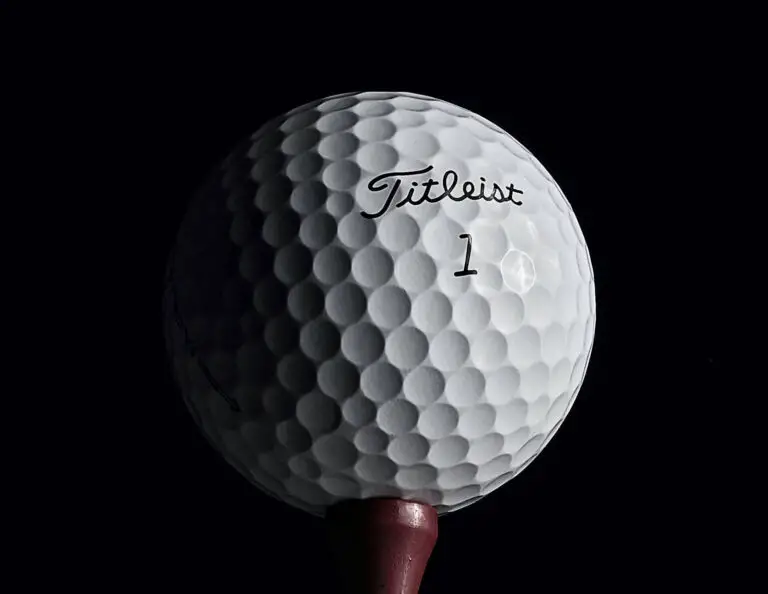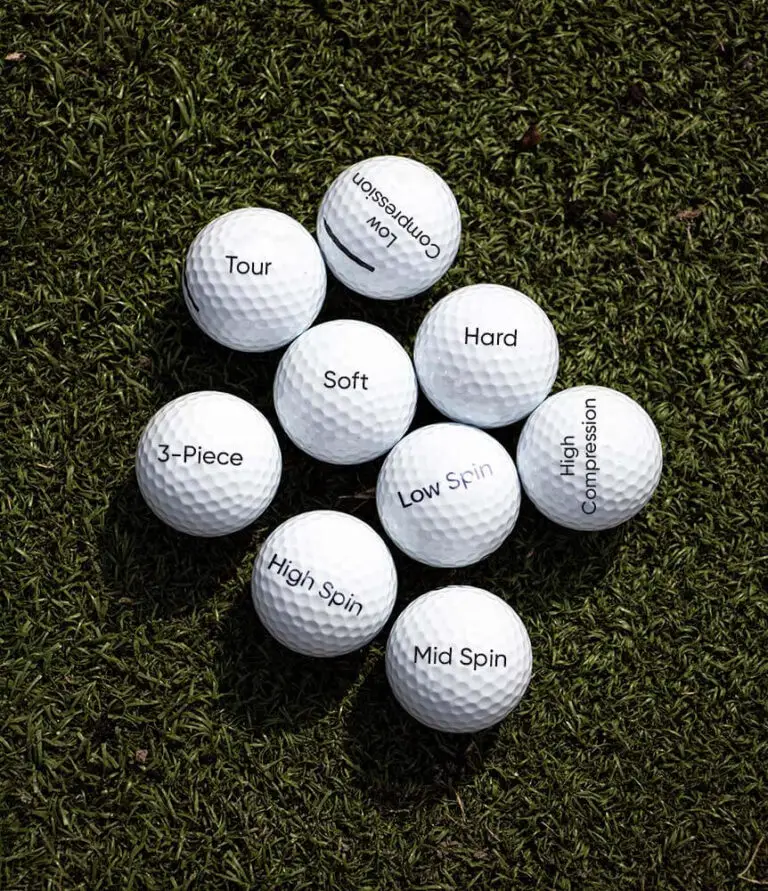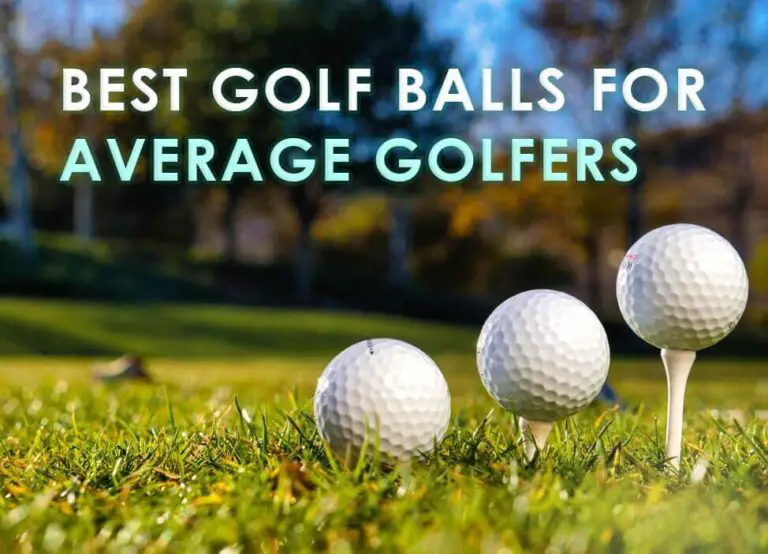
Golf balls come in two types: hard and soft. Choosing the right golf ball is crucial for your game, as it can affect your distance, accuracy, and overall performance. In this blog post, we’ll dive into the differences between hard and soft golf balls and help you make an informed decision.
As a general rule, both firm and soft golf balls will perform similarly for most golfers. The distances between them and the launch angle will be very close, but the key difference is the increased spin rates on longer clubs and better durability on firmer golf balls.
What is the difference between hard and soft golf balls
You may think that feel is the only difference when considering soft vs hard golf balls. However, that’s not the case; there’s more to it than that.
Although all golf balls may look similar on the outside, each ball has a unique design on the inside that affects its performance.
Soft and hard golf balls have different layers, cover materials, and compression ratings that are tailored to specific types of golfers. In summary, soft golf balls and hard golf balls have distinct differences that impact how they perform on the course.
Hard vs Soft Golf Balls at a Glance
.
| Factors | Soft | Hard |
| Compression Rating Range | 35-65 | 65-120 |
| Performance Attributes | Higher launch | Lower launch (generally) |
| Soft feel | Medium to Hard feel | |
| More Straight Shots | More Controlled & Distance Shots | |
| High Travel in the air, low travel on ground | Short Travel in the air, Great roll on ground | |
| Less to Medium spin | High or more side spin | |
| Less durable | More durable | |
| Golfer Profile | (Less than) <90 mph swing speed | (More than) +100 mph Swing speed |
| Prefers maximum forgiveness-Beginner friendly | Skilled player who can control | |
| Doesn’t shape shots, High-mid handicap | Spins the ball, accurate, lower handicap | |
| Price | Budget Friendly 22-40$ a dozen | Starting generally from $50 per dozen, costly |
| Weather | Performs well in all conditions but has an advantage in cold weather | Performs well in all conditions but is harder to compress in colder temperatures |
How to Identify Soft Golf Balls
Quick-view: 5 things to quickly identify a golf ball as a soft golf ball
- Surlyn or soft cover (Rubber like texture)
- Soft Feel when hit
- Golf Ball Packets are usually labeled as “low-compression” or “Soft Feel”
- Less Spin
- Not the most durable
Soft golf balls are created using a material called Surlyn, which has a rubber-like texture. Surlyn is known for its ability to bounce back quickly, which gives soft golf balls a comfortable feel when hit with a golf club.
Soft golf balls are usually labeled with words such as “low compression” or “soft feel.”
They also have a more delicate touch and feel softer when squeezed. When hit, they produce less sound and vibration than hard golf balls.
Players with slow swing speeds will be able to get full benefits of a soft ball as they are usually cheap and it gives straight and distance shots very well without hooking or slicing on the ball too much. It provides more control and accuracy.
How to Identify Hard Golf Balls
Quick-view: 5 facts to quickly identify a golf ball as a hard or high compression golf ball
- Balata or tough cover
- Firm feel with sound when hit
- Golf Ball Packets are usually labeled as “high-compression” or “distance” ball
- More Spin
- Durable due to the outer cover material
Hard golf balls are also known as the “high compression” golf balls which usually have a high core and hard cover material. It is more long lasting cover than Surlyn.
It gets less squashed when hit and makes loud sound, also goes distance with high spin rate because it carries the spin because of the less compression.
Hard golf ball is usually ideal for golfers with faster swing speeds and have control on spin.
Also player with high score should be using a hard golf ball because of the control on approach shots. But its more costly.
Why you can trust Golf Bent? Our expert reviewers spend hours testing and comparing products and services according to players’ need and does survey so you can choose the best for you. Find out more about how we test.
Driver, Iron, Wedge Comparison
We tested the hard and soft golf balls with Driver, Iron and Wedge. For the soft ball we took the Callaway Super Soft and for the high compression golf ball Chrome Soft X.
As Chrome Soft X is not the most hard golf ball, you need to remember the results of the hard golf ball can get .5x or 1x more spin & distance difference with something like the Titleist Pro v1x.
We thought that the each (hard and soft) ball would perform same with each type of club but it was different.
For example Wedge gives soft ball more spin where as Driver gives hard ball more spin on the ground.
| Type of clubs | Launch | Spin | Distance |
|---|---|---|---|
| Driver | Higher launch with soft ball than hard golf ball | Hard golf ball spins a lot than soft golf ball | The hard golf ball had edge in distance but not by a lot |
| Iron | Both has same launch height | Similar but not the best spin on the ground with the soft golf ball | Both had Identical distance |
| Wedge | Same launch angle | More spin with wedge on the soft golf ball than hard | Same distance as a hard golf ball |
1. Driver Comparison
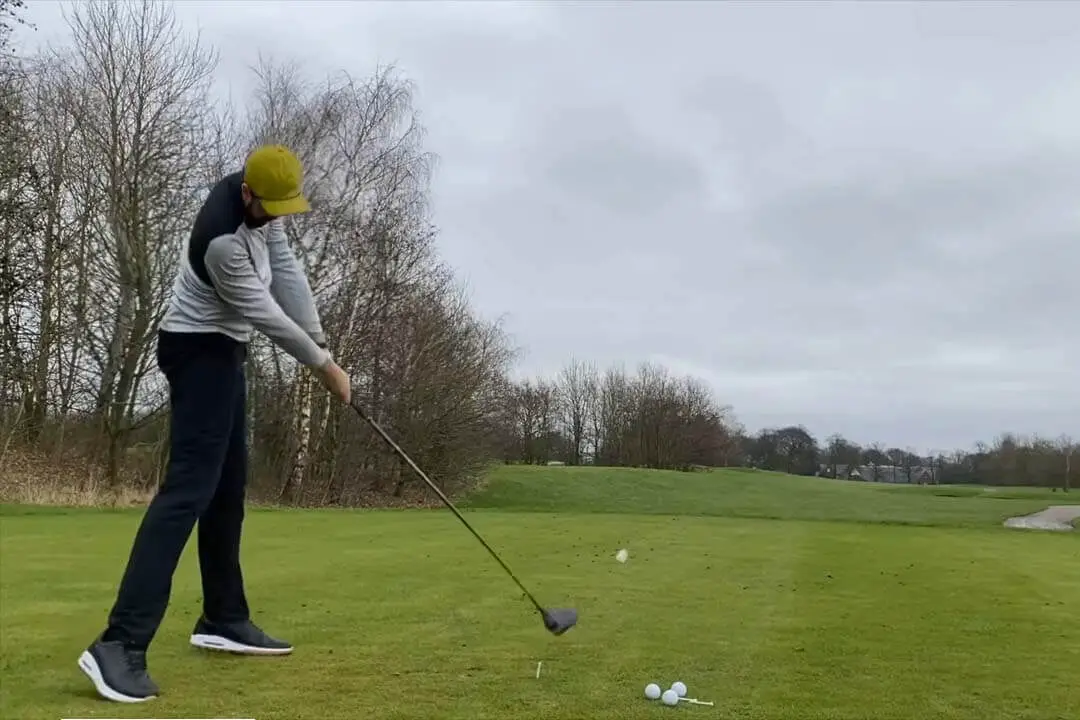
With Driver, we hit the ball to a far distance with higher launch, so it shows us some differences between a soft golf ball and a hard golf ball:
- The softer ball launched higher
- Hard ball had more side spin
- Hard ball had a bit distance advantage
Launch
In terms of launch with driver, players with faster swing speeds got a lower flying ball with soft and hard both, but when we tested with slower swing speed (Below 80mph) it got higher launch with soft golf ball.
Although it was not immediately obvious, upon closer observation, we noticed that the softer balls tended to fly slightly higher in height.
Spin
The biggest performance difference was the amount of spin the soft ball had with the driver was decent but very much less than the hard ball on the ground. The firmer golf ball had an amount of extra spin, which made the ball curve a bit more with high swing speed and control.
RELATED: The High vs Low Spin Golf Balls
Having additional spin on the ball can assist in manipulating the ball’s flight curve and reach target place by producing a draw or fade.
However, this technique is typically for skilled players for enabling more control with the ball.
Distance
Distance testing with the driver was nothing exciting as almost all of the soft golf balls got almost same distance as the high compression firm golf balls. Interestingly, the softer Callaway Supersoft performed a bit better distance.
Even though the soft golf balls had same distances as the hard golf balls, hard golf balls had more spin which added a little bit of more distance.
2. Iron Comparison

- The launch angle was very similar but had hook and slice
- The spin rates were very similar but hard ball wins
- The distances were the same
Launch
Launching with the irons, both soft and hard golf balls had similar height and angle. Although, it was noticeable that the hard ball was getting hooked or sliced often but the launch were the same.
Spin
Soft golf ball and hard ball both had very similar spin. Even some shots had exact same side spin but in 4 out of 10 shots, the hard golf ball had a bit more sidespin.
Distance
Even with the spins on the hard compression golf ball, it didn’t had a big big advantage on the distance.
Although, it won’t be fair to say that other firm balls won’t go more distance because we used a soft feel hard compression golf ball for the test.
3. Wedge Comparison
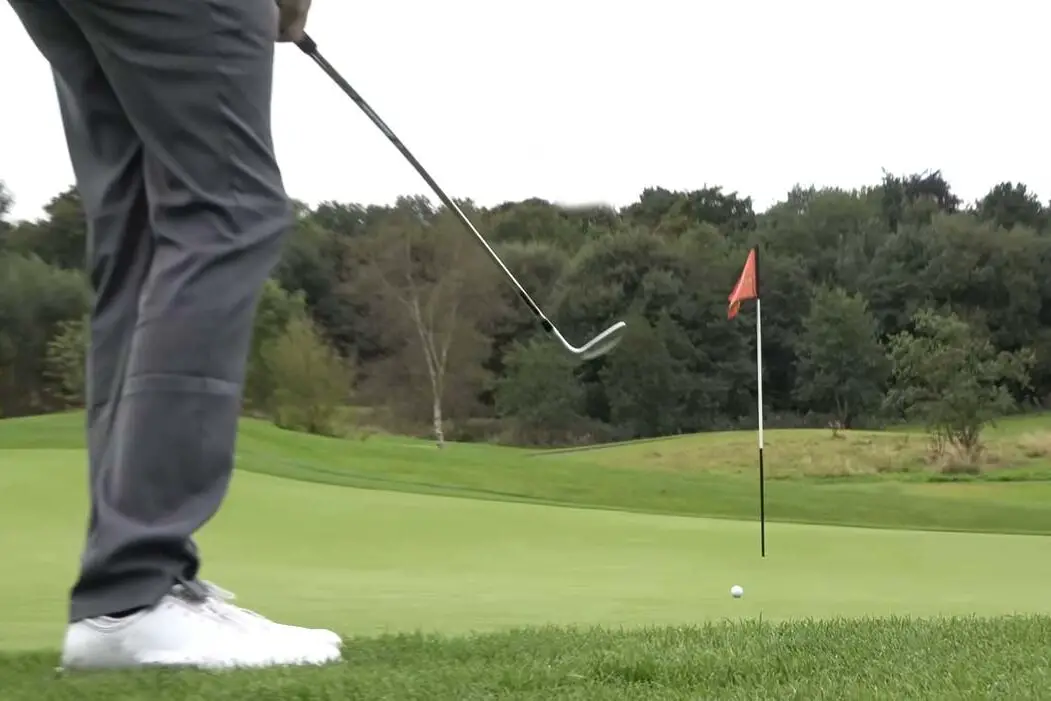
- The launch angle was very similar
- The softer ball had more spin
- The distances were the same
Launch
As the height isn’t all that important with your wedges, the launch was exactly same.
Spin
With wedges, spin got twisted, because the soft ball had more spin than the firm golf ball.
It felt like the hard golf ball would stop quickly on the green and we had to shot couple of time to understand the perfect balance. Whereas the soft golf ball was very spinny and got more than we initially thought.
Distance
The height and distance were very same except for the spin, that helped the soft ball go distance with wedge.
The hard ball was quicker to stop in the green with wedge and flat shots but ultimately the soft golf ball wins here which doesn’t count. Because the same distance could be reached by the hard golf ball with more strong hit.
The Softest Compression Golf Balls
- Wilson DUO Soft+ (Beginners friendly)
- Srixon Soft Feel (Best value for money)
- Callaway Supersoft (Best soft feel & 2nd value for money)
- Taylormade Soft Response Golf Ball (Underrated)
- Titleist Tour Soft ( high handicappers friendly
- Pinnacle Soft Golf Ball (Best budget friendly)
To find out more, check the Best Soft Feel Golf Balls
The Hardest Compression Golf Balls
- Mizuno RB Tour X (Highest compression)
- Titleist Pro v1x (2nd Highest compression, used by many pro players)
- Callaway Chrome Soft X (Soft feel with great control)
- Srixon Z-Star XV (Underrated)
- Titleist Pro v1 (Great performance but much costly)
- Taylormade TP5X
To find out more, check the Best Golf Balls for High Swing Speed
Choosing the Right Golf Ball
In almost all cases, an average golfer will prefer a softer golf ball over a firmer ball. Softer balls normally have a lower compression rating which means it will take less club speed to properly compress the ball. This will result in straighter shots and a better feeling golf ball.
Swing Speed
If you are a golfer with a slower swing speed and you value control and accuracy over distance, then a soft golf ball may be the best choice for you.
On the other hand, if you have a faster swing speed and you want to maximize distance, then a hard golf ball may be the better option.
Spin vs Control
Hard golf balls will have more spin, while soft golf balls will have less spin but better control for anyone.
High compression will give high spin which are likable to skilled player because they can control and maneuver it to the target place without unintentional hooking or slicing.
Low compression give usually low spin and you can easily master straight shots if you know how to hit properly without worrying about spin much.
RELATED: Best guide on high vs low spin golf balls
Distance vs Control
It’s also important to consider the course you will be playing on. If you frequently play on shorter courses, a soft golf ball will provide more control on approach shots. If you frequently play on longer courses, a hard golf ball will provide more distance on drives.
If you’re looking for more distance off the tee, a hard golf ball may be the better choice for you. If you’re looking for more control around the greens, a soft golf ball may be the better choice. It’s important to find the right balance between distance and control for your own game.
Color
Usually soft golf balls come in all sorts of colors. Hard golf balls also come in other colors than white but the color range is very limited and on very limited models. Learn more about golf ball colors.
Budget
Budget plays a big role in choosing hard or soft golf ball because hard golf balls are way expensive and you’re going to lose them frequently if you’re a high handicapper.
So its better to stick with the best value for money soft golf balls unless you’re trying to up your game and improve score to get skillful and have budget, then go the mid-high compression golf balls.
When should you choose a Hard Golf Ball?
You should choose a hard or high compression golf ball of a 3-5 pieces ball when:
- You have a high swing speed (90-100 mph).
- You can make more accurate shots.
- You are skilled enough to make sidespin with control.
- You have budget to cover the costly high compression balls.
Some golfers may prefer a softer ball for its feel and control, while others may find that a harder ball suits their game better.
Ultimately, the best way to determine which type of golf ball is right for you is to try out both and see which one performs better for your game gradually but start with soft golf balls to go easy on wallet.
Do Pros Use Soft Golf Balls?
Bubba Watson, a two-time Masters champion, he used Titleist Pro V1x (a firm golf ball with a decent feel) because it can generate good spin but has stated that he prefers using a soft golf ball because it helps him hit the ball farther with a soft feel.
Dustin Johnson, Jon Rahm, and Rory Mcilroy like players are going for soft golf ball. Interesting fact 55% of the pro players uses some kind of soft feel golf ball.
Can a Golf Ball Be Both Hard and Soft?
Golf balls can be confusing because they’re often marketed as having a “soft feel” even if they’re hard. This is because the outside cover of the ball affects the feel.
Urethane covers feel softer and spin more, while Ionomer or Surlyn covers are harder and spin less.
RELATED: Urethane vs Surlyn vs ionomer covers.
So a golf ball can be both hard and soft depending on the cover. The Vice Pro Soft is an example of a soft compression ball with a soft feel.


